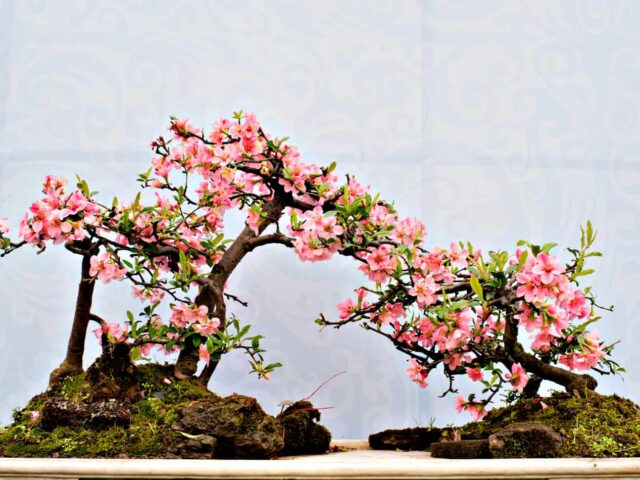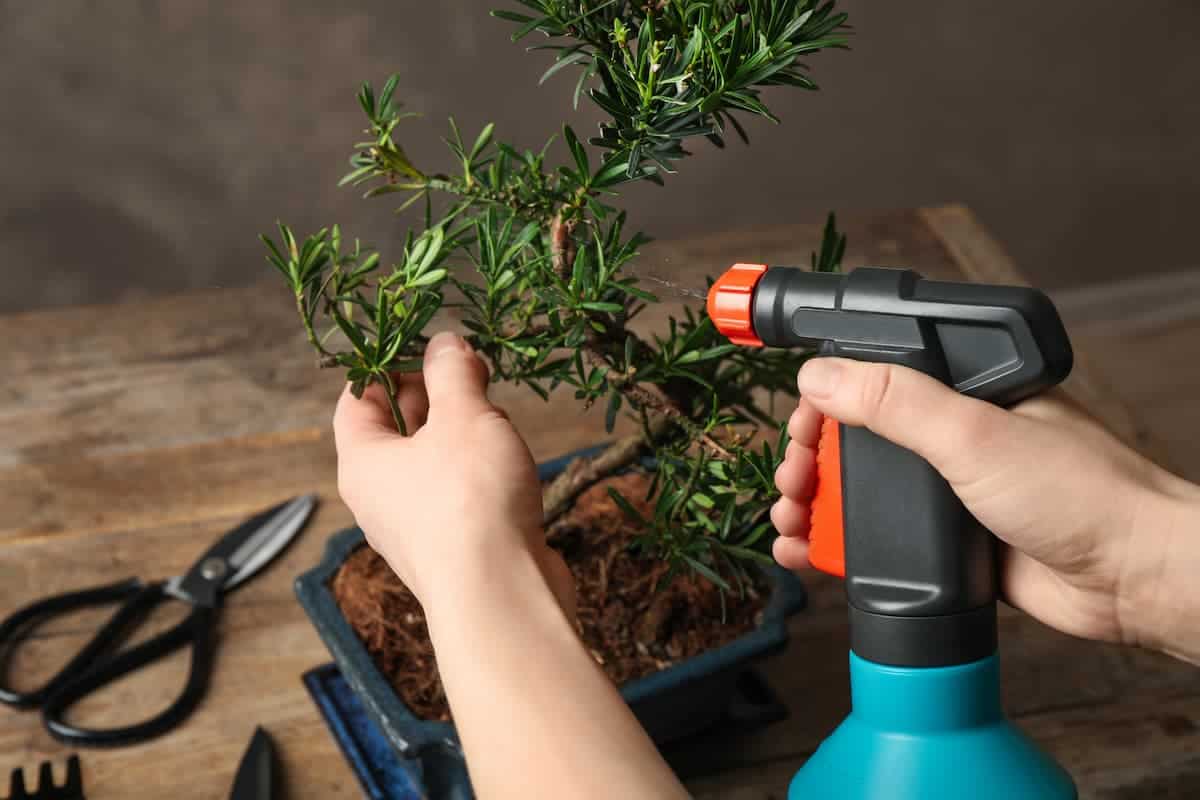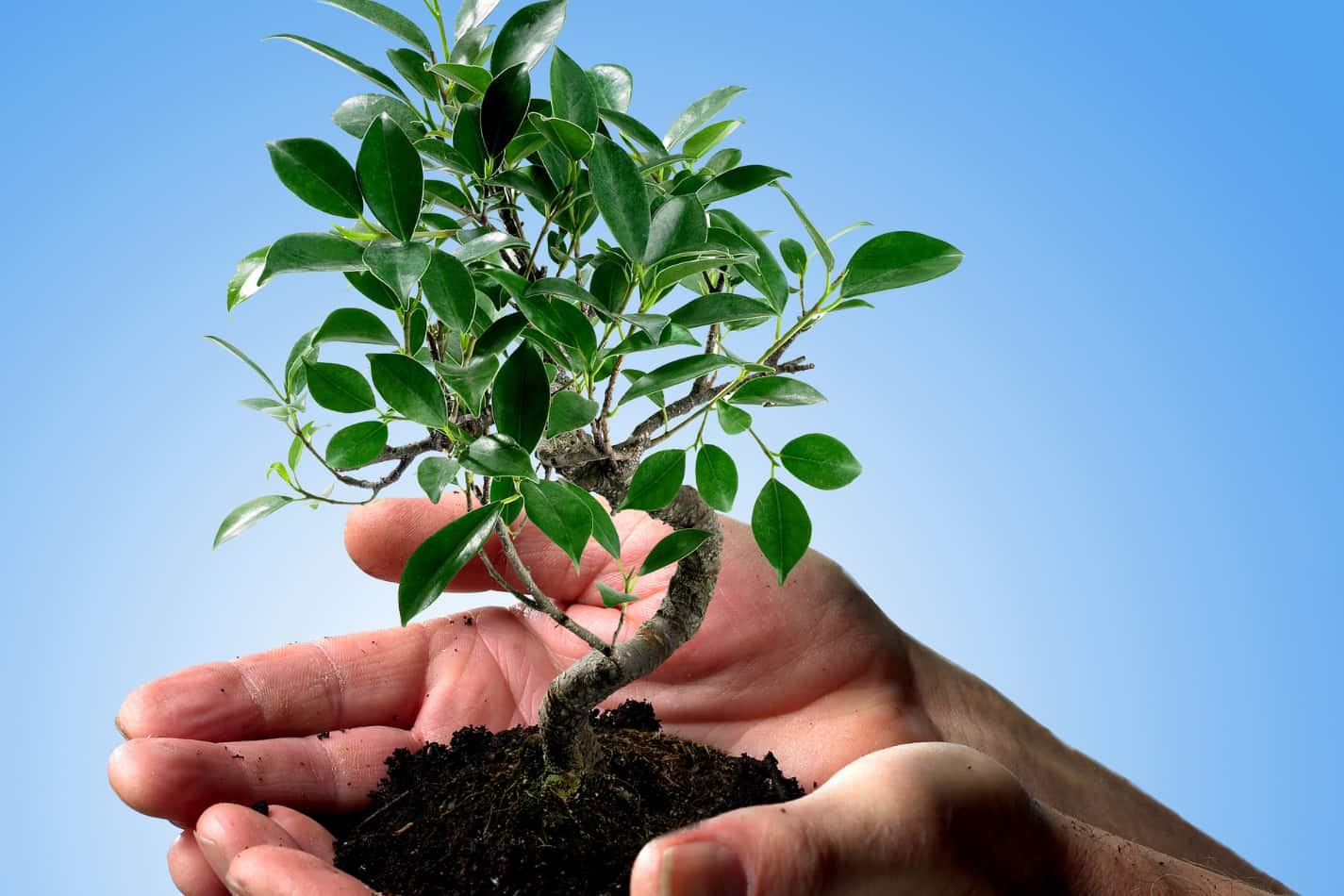If you have come across wisteria trees, you already know that their drooping and lush flowers provide a beauty like no other. The trailing vines add an enchanting aesthetic look as well. Such wisteria trees can also be grown as bonsai trees. You might be wondering if it is an easy feat to achieve given that bonsai plants require a lot of care and attention on their own.
Wisteria is very suited for bonsai. So, you can say that they are relatively easy to bonsai. Wisteria bonsai can be developed either by propagation or through seeds. The seeds are the easiest choice, but sometimes they do not flower until they are 10-15 years old.
You must be wondering: how easy is wisteria bonsai to grow? In this article, I have included all the relevant information along with further insight. If you look forward to growing one in the abode of your home, I would recommend reading through the whole article.
How Do You Grow A Wisteria Bonsai?
Wisteria is one of the most glorified garden plants because of its cascading vine-like branches that bloom during spring and early summer. This ideal bonsai plant blossoms mostly with blue petals, but they can also be white, pink, or lavender. The flowers are its most unique feature, ones which can easily make the insides of your house look more elegant.
This plant requires plenty of care and patience, even though wisteria is fast growing. Through seeds or by propagation, there are two ways of growing wisteria bonsai.
Seed
Unlike other plants, you cannot grow wisteria by just tossing the seeds into a pot. It is crucial to germinate the seeds or to push out the roots. This is how you can understand if the seeds are usable. The instructions for the procedure are as follows.
Step 1: First, you need to harvest the required seeds from a pod of a healthy wisteria plant. The seeds must be dry. You can test it by shaking the pod. If they make a sound, you can proceed.
Step 2: Assess which seeds can sink by placing them in a container of water. If they do, this means you use only those. Anything else will not grow in the future.
Step 3: Before sowing the selected seeds, thin the shell with a sharp blade or file, only a little. By weakening the outside of the seeds, you can help the embryo germinate properly.
Step 4: Take a large and shallow pot. Drainage holes must be there in the container. Fill it with moist, seedling mixtures. Make sure the mixture is soilless.
Step 5: Place the seeds on top of the mixture. Then, cover it with a thin layer of soil. Place the pot in a place that has proper lighting.
Step 6: Moisture is essential for wisteria plants. So, you must keep the soil moist but ensure that the water is not excessive. Check the moisture levels every day.
Step 7: Once the wisteria seedlings begin to sprout, move them to a shallow, well-drained pot to start the bonsai process.
If you are looking for further details, you can take a look here.
Propagation
You will see the wisteria plants bloom earlier if they are grown from cuttings, grafted plants, or air layers. This is referred to as propagation. Fruitful propagation of a wisteria bonsai depends on proper lighting, watering, and many other things. The procedure is given below.
Step 1: Take sharp pruning shears or a thin blade. From a healthy wisteria plant, cut up to 4-6 inches. This is softwood cutting. I would recommend doing this in the summers, during the morning. Such cuttings root best when the temperature is above 70.
Step 2: In a big container, plant the shoot. The roots will have plenty of room to extend themselves in the future. Place this in a place that has limited shade. This will enable the branch and trunks of the plant to thicken.
Step 3: Prune the plant to shape, especially the branches. If you wish, you can shape the trunk with bonsai wire after the root structure is properly established. I would suggest doing this during the upcoming spring.
Step 4: When the wisteria plant must be at least 2 feet tall with a thick trunk, move it to a bigger and traditional bonsai pot. The pot must be mixed with soil that is used to grow bonsai trees.
Step 5: While repotting, you must prune away the dead roots. Yet, you should trim the live roots in a way that will allow them space. You must enable the pot to be completely bound with roots. In the future, this will help with a mature growth phase.
In case you are looking for further demonstration, you can check this out.
Taking Care of A Wisteria Bonsai Tree
It is essential to understand that the beauty of a Wisteria Bonsai relies on how well you take care of it. With years of nurturing, the plant grows more appealing to the eye. Below, I have listed down the ways on how you can properly take care of your Wisteria Bonsai.
Placement
During the growing season, position the wisteria bonsai under direct sunshine. This plant requires a lot of sunshine to grow. When planted in the ground, wisteria is a sturdy plant but when grown in a pot, its roots are very fragile.
As a result, during the winter months, you may try to bring the wisteria plant indoors to a cool spot, such as a garage or shed, where it will be safe from the cold.
The bonsai should be placed outside in the spring, summer, and fall, whether on a patio, balcony, terrace, or in a garden. Once outside, place your bonsai where it will get plenty of sunlight — morning light and afternoon shade are best.
Watering
Wisteria bonsai has to be watered regularly. When the soil seems dry, provide water; never let the soil become extremely dry. If your Bonsai is in direct sunlight, you may need to water it each day.
This plan may vary depending on the size of your pot, the type of soil you use, and the type of Bonsai tree you have. It is better to understand how much water each tree requires and change your watering schedule accordingly. It’s a good idea to use a moisture meter until you figure out what your Bonsai tree needs.
When growing, the wisteria tree requires a lot of water, especially right before and during its blooming cycle. The pot should ideally be positioned in a dish of water, allowing the tree to absorb all of the water it requires through its roots.
The tray should be removed when the top of the soil is damp. This will help to keep the roots moist during the dry fall and winter months.
Fertilizing
Fertilizing is also a requirement to keep your bonsai healthy and attractive. Because your wisteria bonsai is growing in such a small amount of soil, it is vital to refill the soil’s nutrition supply on a regular basis.
Once a month, use a solid organic fertilizer to fertilize your wisteria bonsai. You can use a liquid fertilizer once as well during the growing season.
This plant develops rapidly and prefers to be fed frequently, but you’ll have to use a nitrogen-rich fertilizer to get the job done. However, it is important to utilize fertilizers that are low in nitrogen. The wisteria can absorb nitrogen from the atmosphere, but too much nitrogen drives leaf growth rather than blossom development.
Pruning
Pruning is usually done to achieve or maintain a weeping or cascading habit, which is perfect for showcasing flowers when they are in bloom. Trim seed pods as soon as they appear to redirect growth to the flowers rather than the establishment of seeds, resulting in more frequent blooms.
The optimal time to prune a wisteria bonsai is in the early spring or after it has blossomed. Trim the vines back after they’ve grown a little. Prune the wooden components of the tree, including branches and twigs, after the leaves have fallen.
Allowing a large number of seed pods to grow on the plant must be prevented, as this will cause it to expend unnecessary energy.
Repotting
The reasons for repotting are to provide your tree with fresh soil and to develop a more compressed root structure. A typical soil mixture is adequate. The pH level should be between 5.5 and 6. Wisterias thrive in broad, deep pots, and using fresh soil every time they are repotted, reduces the chance or spread of disease.
Younger wisterias should be repotted every two years, and older ones every three to five years, in the spring before the buds bloom. They withstand root trimming well, although, on older trees, you should be cautious. When wisterias become root-bound, they blossom more profusely.
Pests and Diseases
Wisteria bonsai isn’t prone to a lot of problems, especially if it’s maintained in the proper environment. However, fungi such as leaf spots and powdery mildew may cause problems.
However, fungal issues such as leaf spots and powdery mildew are inevitable. Remove any infected leaves as soon as possible to prevent this. You should also watch out for root rot, which can be avoided with proper watering.
Some Complications Of Growing A Wisteria Bonsai
With other plants, it is common for complications to arise while taking care of a plant. Similarly, wisteria bonsai trees may exhibit problems as well. After all, bonsai trees are known for needing care. Below are some things you should be aware of.
Not leafing out
When wisteria does not have leaves, it can be a cause for concern. Weather is the most typical cause of this. Those experiencing cooler-than-normal spring weather should typically expect delays in the growth of trees and other plants, such as wisteria, or the leafing out of plants.
Unfortunately, if the plant is brown and dried up, it is most certainly dead.
Revitalizing a Wisteria Bonsai
It is vital to regularly keep the soil moist and well maintained, especially during autumn. This task is done to retain hydration. So, this might be an additional hassle for you. Waterlogging occurring for a short time is not as concerning, even though some debark can be expected.
However, wisteria mostly does not tolerate sodden soil for long periods of time.
Poisonous
Both the seeds and pods of wisteria bonsai are poisonous and should be kept out of the reach of children and animals. You should also wear appropriate gear while taking care of them.
Conclusion
After reading this article, you should be able to grow a wisteria bonsai and bless it with the utmost care. Plants can easily flourish as long as you give them the required attention and do not overdo it. The Wisteria bonsai is no different.
I would advise sticking to a strict routine and monitoring the wisteria bonsai regularly. I wish you and your wisteria bonsai a healthy life!





